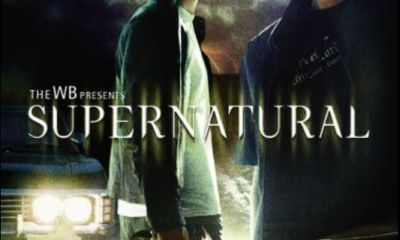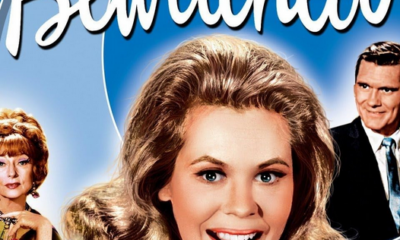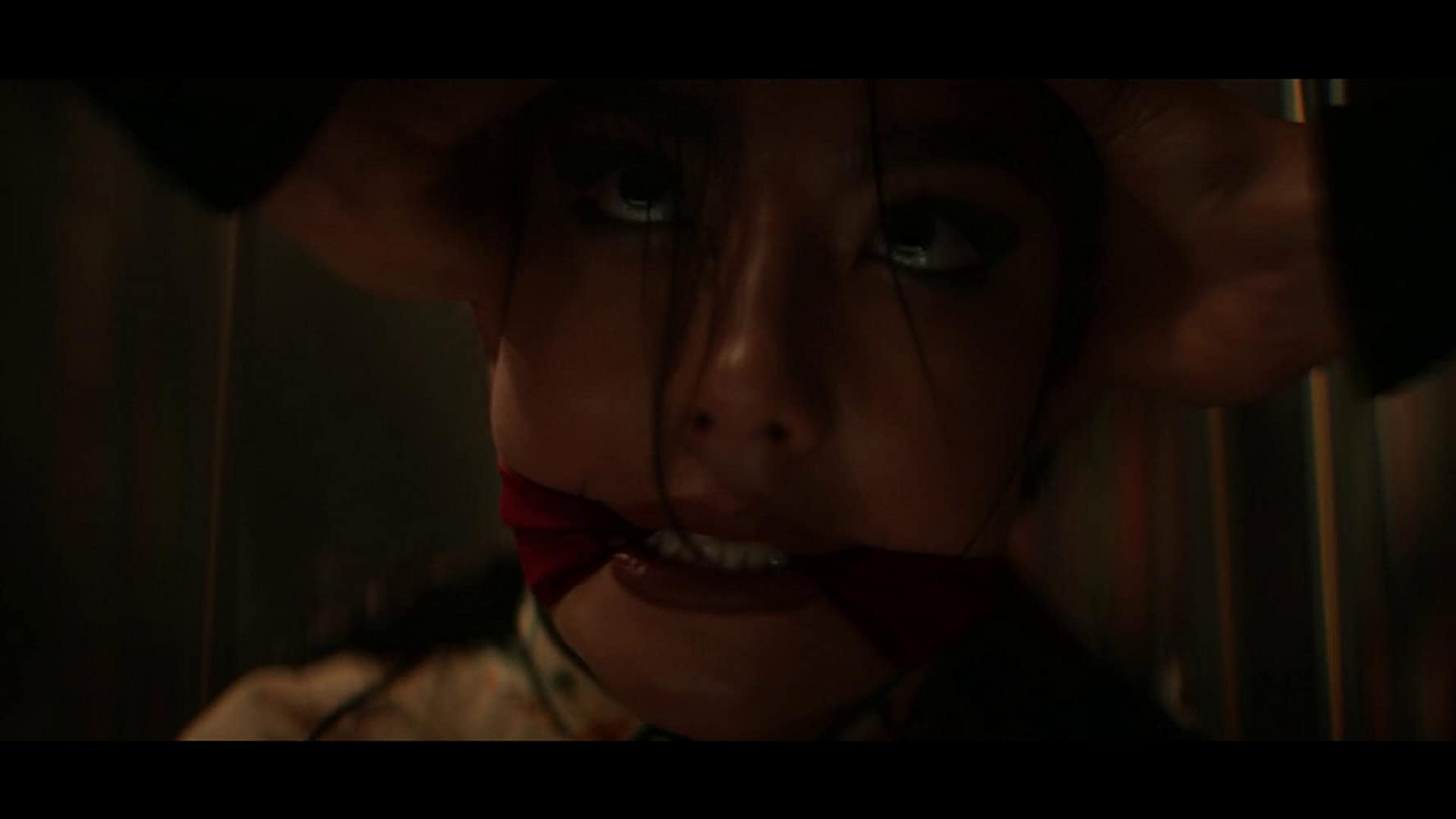
Watching Sabrina the Teenage Witch, as a modern witch
Witchcraft has always been a go-to for creatives. Books, movies, TV shows, songs and even comic books have included depictions of witches going back to Grendel and Lilith.
In modern times, witches still have a strong foothold in our cultural zeitgeist. We cannot get enough of women in pointy hats, brooms, cauldrons and black cats.
Of course, all of this love for the fictional witch ignores the fact that there are very real witches still around today. You probably know someone who identifies as a witch. And if you don’t, you do now.
I am a modern, practicing witch. When I was growing up in a religion that didn’t allow playing cards or women to wear pants in church, my only real outlet for my witchy interests was the myriad fictional depictions of witches I saw around me. Oh, how I loved them.
That being said, learning more about real witchcraft has changed how I feel about a lot of fictional witchy depictions. Sometimes I like them more. Sometimes I like them much, much less. As if I could have liked the Chilling Adventures of Sabrina less.
So today, we’re starting a series of classic reviews covering witches in modern fiction. We’re going to take a look at what these shows got right about witchcraft, and what they got laughably wrong.
Speaking of laughing, we’re starting with the lighthearted Sabrina The Teenage Witch.
Just the facts
Running for seven seasons from 1996 to 2003, Sabrina the Teenage Witch was based on the much longer-running comic series. It starred Melissa Joan Hart, had a laugh track, and was just the pinnacle of a bad but enjoyable nineties sitcom. The story revolves around Sabrina Spellman, a teenager who just found out that she is a witch. Together with her aunts, Hilda and Zelda, and a wisecracking warlock turned cat named Salem, she experiences the nefarious world of a high school student while trying to learn about her new fantastic powers.
Sabrina the Teenage Witch is a fun show if you need something bright, cheerful and happy. It’s funny, sometimes not on purpose, and has an array of enjoyable characters. The magic is wildly out of the bounds of reality. The only real limitation seems to be the arbitrary (and often plot device-heavy) rules from the Witch’s High Council.
What Sabrina got right
I’m never going to suggest that the witchcraft in Sabrina the Teenage Witch is realistic. Honestly, if someone tells you they can turn you into a pineapple, they’re probably messing with you. But yes, there are some realistic aspects to the way witchcraft is portrayed. And lots to appreciate.
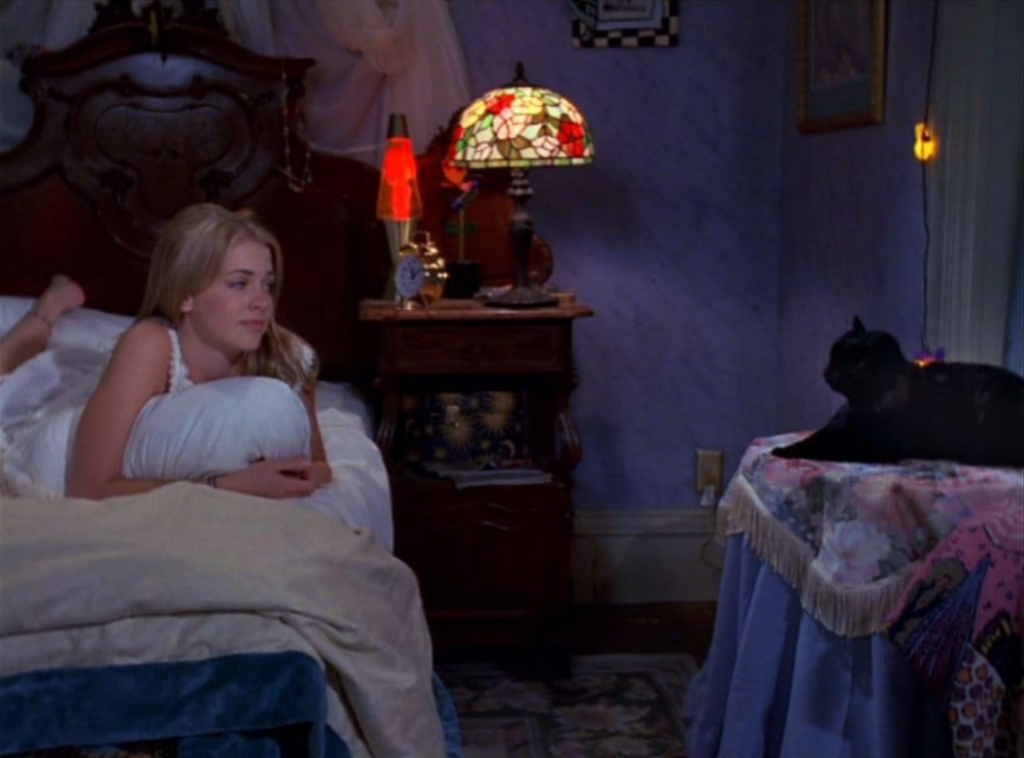
For starters, I appreciate the inclusion of male witches. Sabrina’s father is a witch, and of course, so is Salem. Men who practice witchcraft are often overlooked, or dismissed. So the inclusion of a main character who’s a male witch (even if he is in cat form) was nice.
Another thing I liked was Sabrina’s response the first time her aunts tell her she’s a witch. She laughs it off, thinking they’re a little weird. And honestly, unless you have some weird religious people around you, that’s the normal response. Some people in the community worry that people will judge them, and I get it. But the top response from most people is usually to say, “Oh cool,” and then change the subject.
Finally, there were some magical bits that Sabrina got right. For one thing, there is very little wand waving. And while some witches do use wands to direct energy, many of us just point our fingers. That was good to see.
I also liked the acknowledgment that more witches mean more energy for a spell. Anytime you can rope some friends into doing a spell with you, it’s gonna have more oomph. And sometimes you need that. It’s like moving furniture. You can probably move an end table by yourself. But moving a couch might take a couple of guys.
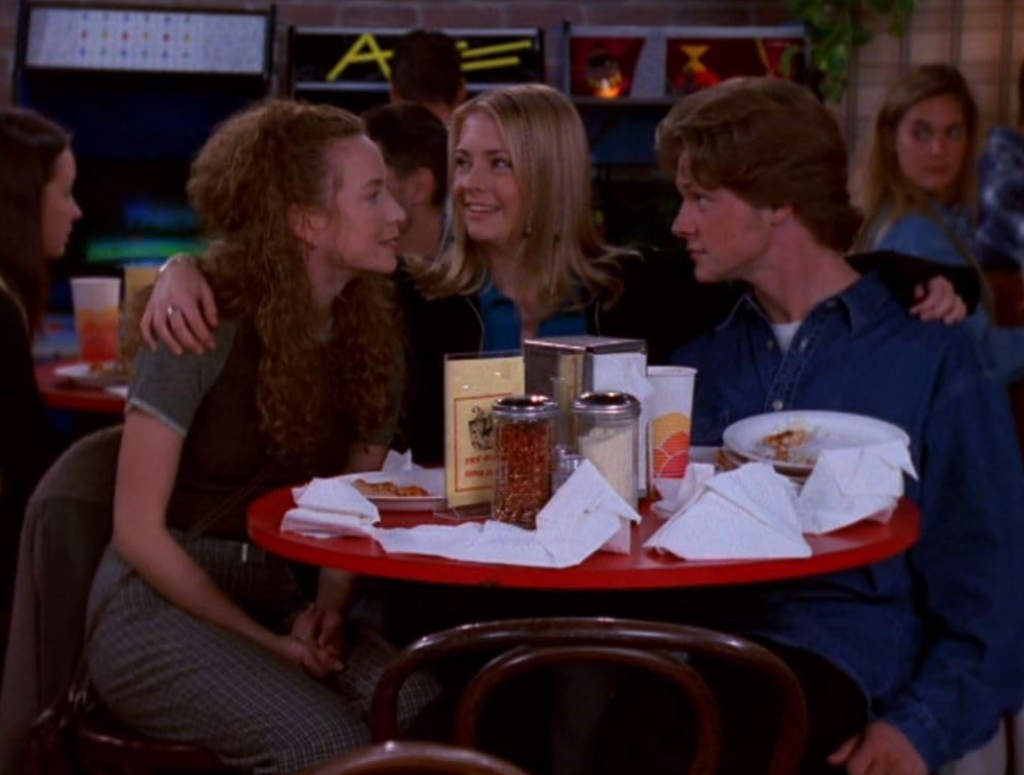
What Sabrina got wrong
All that being said, of course, Sabrina didn’t get everything right. And I’m not talking about the wild things that aren’t realistic. I’m not going to rebuke the show because no one actually levitates.
But I don’t like the fact that it never seems to cost any of the witches anything to cast a spell. They throw around their powers as though it takes no energy at all to do so.
Magic takes energy. It has a price. Sometimes it’s a small one, sometimes it’s not. Going back to that analogy about moving furniture, if you’re trying to move something too heavy alone and without the proper tools, you’re apt to pull a muscle. Sabrina is just learning about her powers. Using them should make her tired. It could cause a headache, illness, or just the need to sit down and drink a cup of tea.
My biggest pet peeve, though, is the thought that someone has to be born a witch. This is something anyone can do if they want to. And while hereditary witches might have a leg up on those of us who had to figure everything out for ourselves, anyone can be a witch. Anyone, at any time, can start researching and learning about witchcraft.
All in all, Sabrina the Teenage Witch is a fun show with some surprisingly accurate and forward-thinking witchy notions. If you managed to sidestep it so far, consider giving it a watch. I doubt you’ll be disappointed.
If you want to see more of this series, or if you have a piece of witch fiction that you’d like me to review, let me know in the comments.
 (4 / 5)
(4 / 5)
Movies n TV
Wheel of Time A Question of Crimson Is a Political Espionage Delight
Episode two of Wheel of Time felt like the beginning of a long journey. Stories are unfolding, lives are changing, and blood is spilling.
Let’s discuss.
The story
We begin this episode in the past with Elayne’s mother, Queen Morgase. It turns out her rise to the throne was a bit, shall we say, cutthroat. So when she shows up at the White Tower, Siuan is concerned.
She might have reason to be, too.
Meanwhile, Rand, Egwene, Moiraine, Lan and Aviendha are in the Spine of The World. As they travel through some of the most breathtaking lands I have ever seen on a TV show, Egwene is plagued with nightmares. We think at first that’s just her trauma working itself through her system. But we soon find out that it might not be that straightforward.
Finally, Perrin returns home to heal after his hand is almost cut in half. But when he gets there he finds the town has been infested by Children of The Light. And they’re looking for him.
What worked
There was something heartwarming in this episode about political espionage and choking religious persecution. And that is Elayne’s relationship with her family.
I have consumed a lot of fantasy content with royal families. And I have never once heard a princess call her mother ‘Mum’. I’ve never seen royal siblings get along. And I have sure as hell never seen a princess have a good relationship with her step-parent.
This was refreshing. Even though Queen Morgase is kind of a horrible person she seems like a good mother. And that’s an unexpected delight.

Of course, this is just one storyline among many. And while this can sometimes be overwhelming, in this case it wasn’t.
I’ll be honest, some of these storylines are going to drag for me. I know this because I’ve read some of the Wheel of Time books and I have an idea that not all the characters exactly pique my interest.
No one likes all the characters. No one likes all the storylines. While I am here for the political espionage between Queen Morgase and Siuan, not everyone likes it. While others might be fascinated with Selene trying to win Rand back, I couldn’t care less.
Having multiple storylines keeps everyone’s attention better. So long as things don’t get out of hand. Things can easily get out of hand. But this seems to be managed well.
So far.
What didn’t work
As I mentioned above, I’m not thrilled with Rand’s story at this point. And while it’s fine to not like a storyline when there are this many to choose from, it’s not fantastic that the one I like the least is the one involving our two main characters. And anytime we were with the team at the Spine of The World, the only thing that brought me joy was Moirain’s hat. It reminded me of Stockard Channing’s hat in Practical Magic.
The problem is that Rand is Charlie Brown with controversial magical powers. He is boring, serious, and pessimistic.
And yes, I understand that he has a heavy emotional burden and he’s the Dragon Reborn and that’s quite taxing and all. But let’s be fair, there isn’t a single person in this show that doesn’t have a heavy burden. And most of them manage to be fun occasionally.

All that being said, this episode of Wheel of Time did exactly what it needed to do. It set up conflicts at each of the three locations. It established emotional ties between the characters and the events. And it established goals for everyone.
This was, in short, a solid episode. Not groundbreaking, not mind-blowing or life changing. It was simply good. It was entertaining and moved the plot forward.
Well done.
 (3.5 / 5)
(3.5 / 5)
Movies n TV
Wheel of Time Returns With A Bang
Wheel of Time is back for season three. There are mixed feelings regarding this. Last season, there were some serious pacing issues. And some serious sticking to the book’s storyline issues. But we’re two seasons in, and we don’t give up so easily. So let’s dive into episode one, To Race the Shadow.
By the way, I highly recommend watching this episode with the subtitles on. You’ll see why.
The story
We begin this episode with Liandrin facing a trial of sorts for her rampant betrayal. She does her best to gaslight her Aes Sedai sisters into thinking that Siuan Sanche is the real traitor.

When that doesn’t work, she reveals how many Black Aes Sedai have actually infiltrated the tower.
Spoiler, it’s a lot.
In the aftermath, our whole team gathers to drink and enjoy one night of relaxation before they head out to the Tear to form an army for Rand. All is going well until they’re attacked by myriad creatures and a sentient axe.
What worked
This episode was long. It had a run time of an hour and eleven minutes. And a lot of that run time was spent in heavy dialog scenes.
Fortunately, these were well-done scenes.
If you’re going to have a lot of talking scenes, there are good ways and bad ways to do it. Last season, we saw lots of examples of the bad way to do it. But this episode did it well. For one thing, other things were going on while conversations were taking place. The characters are drinking, playing games, walking through an interesting city. And the scenes themselves didn’t stretch out. They weren’t repetitive. We heard what the character had to say, then we moved on.
It was also nice that the point of these scenes wasn’t just info dumps. We had character development. We had romantic interactions. We had plot development and foreshadowing.
Overall, this episode felt like what it was. A moment of calm before a storm.
Taking a step back, I’d be remiss if I didn’t address the fight scene at the start of the episode. Because it was epic.
The magic looked amazing. The martial arts that went along with it looked fantastic. The costumes were beautiful. It was just incredibly fun to watch.
More than that, it was emotional. We lost some characters in that fight that were important. And it was clearly emotionally shattering for many of our characters, who found themselves betrayed by people they trusted.
So many of them.
It was a great way to open the season.
What didn’t work
Despite that, this episode wasn’t without its flaws.
First off, there were a lot of dialog scenes. And they were good scenes, as I’ve already discussed. But it was one after another after another. And when your episode is, again, an hour and eleven minutes, it’s maybe a little much to have so much chit-chat. Couldn’t some of these conversations, important as they were, have been moved to maybe another episode?
Finally, I want to talk about Egwene’s travel through the arches.

I feel like maybe there were some deleted scenes here. Because there must have been more to that visit than what we saw, right?
We could have seen Egwene battle Rand. That would have been badass and emotionally devastating. We could have seen her with a quiet life with Rand back home at the Two Rivers. We could have seen anything except for the quick clip of Rand in a bloody river, followed by Egwene being shoved back out in a bloody shift.
Bad job. But at least it wasn’t an extended scene of Moiraine collecting bathwater, and then taking a bath while looking sad. If we’d started this season with another scene like that, it might have broken my brain.
Amazon dropped the first three episodes at once. So we’ll be back soon to talk about episode two. See you then.
 (4 / 5)
(4 / 5)
Movies n TV
Entertaining as hell: Eight Legged Freaks (2002) Review
Early 2000s is a special era for the industry. It accepts the cheesiness and corniness of movie making, in turn producing some gems in their own right. Eight Legged Freaks starring David Arquette and young Scarlet Johanson is a horror comedy about giant spiders who overtake a small town. As crazy as that premise sounds, the movie surprisingly has a ton of heart and is super entertaining. Let’s review, shall we?
Plot
We start Eight Legged Freaks with a shot of toxic waste spilling into the water supply of Joshua, a spider farm owner. He is friends with Mike, one of our protagonists, who is a science geek and a spider enthusiast. Mike notices something quite right upon visiting Joshua, but no one takes him seriously. We are then introduced to the rest of the crew. Mike’s mother Samantha, the town sheriff, is too busy chasing Ashley, his sister, who is dating the town mayor’s son Bret (something Samantha does not approve of). We also have Chris, who returns to the town to save his father’s legacy in the town mines. He has opposition from Wade, Bret’s father, who wants to use the mines for his business ventures. Lots of drama going on that will only get juicier once the spiders get loose.
The creepy crawlies quickly dispose of Joshua and make their grand appearance after Ashley rejects Bret’s advances, abandoning him in the middle of a desert. A glorious chase sequence ensues as the spiders make their way towards the town, wreaking havoc on its residents. In a true horror fashion (which the movie acknowledges), it takes some convincing from Mike and then from Samantha for the town to take the threat seriously. The tongue-in-cheek style of narrative adds the comedy aspect to a movie that would otherwise burn out fairly quickly.
The remaining characters hide out in a shopping mall as it’s the only somewhat sturdy building in the area. This doesn’t last long as the spiders break in, forcing them to run through the mines. Their resources to fight the creepy crawlies off are limited as the methane gas doesn’t allow them to use firearms. Such conditions require resourceful thinking from Chris, who uses perfume to fend off the leader of the spider group and save himself during the climax of the movie.
Character dynamics are not forgotten once the action kicks in. We have Chris confessing his long-term feelings for Samantha which she knew all along, which provided some comedic relief. Bret also reunites with Ashley and apologises for being an asshole. Mike finally gets the appreciation he deserves as his knowledge saves the townsfolk more than once during the whole ordeal.
We end the movie with the town’s radio show person telling the story as an urban legend during his segment. This brings it into question – how much of it happened the way he said it did? We can only guess…
Overall thoughts
Eight Legged Freaks is a fun creature feature with some self-aware commentary on genre tropes that doesn’t take itself too seriously. The acting is good, the pacing fitting and the characters are likeable enough for you to want them to make it through. Definitely a must watch, if you don’t suffer from arachnophobia, that is.
 (5 / 5)
(5 / 5)


